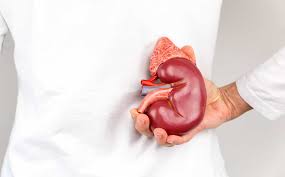Article
FDA Expands Sutent Approval to Prevent Kidney Cancer Recurrence
The FDA approved Sutent to be used in patients who had a nephrectomy and are at high risk of their kidney cancer returning.
Sutent (sunitinib) was granted approval by the Food and Drug Administration (FDA) for use as an adjuvant therapy in patients with renal cell carcinoma (RCC) who have received nephrectomy and are high risk for recurrence.
The approval for Sutent is based on findings from the phase 3 S-TRAC trial, which were presented at the 2016 ESMO Congress and published in the New England Journal of Medicine. In the study, adjuvant Sutent prolonged disease-free survival (DFS) by 1.2 years compared with placebo following nephrectomy for patients with high-risk clear cell RCC.
After a median follow-up duration of 5.4 years, the median DFS was 6.8 years in the Sutent arm compared with 5.6 years with placebo. In higher risk patients, the median DFS was 6.2 versus 4.0 years for Sutent and placebo, respectively. Grade 3/4 adverse events (AEs) were experienced by 63.4 percent of patients in the Sutent group compared with 21.7 percent in the placebo arm.
The FDA approved Sutent for this indication despite a 6-6 vote on the potential approval from its Oncologic Drugs Advisory Committee in September.
“This is the first adjuvant treatment approved for patients with renal cell carcinoma, which is significant because patients with this disease who have a nephrectomy are often at high risk of the cancer returning,” Richard Pazdur, M.D., director of the FDA’s Oncology Center of Excellence and acting director of the Office of Hematology and Oncology Products in the FDA’s Center for Drug Evaluation and Research, said in a statement. “There is now an approved therapy for patients who previously did not have options to potentially reduce cancer recurrence.”
The study randomized 615 patients with clear cell RCC to receive Sutent (309 patients) or placebo (306 patients). Patient characteristics were well balanced between the arms. The median age of patients in the Sutent arm was 57 years, and most were males (71.8 percent). Most patients had an ECOG performance score of 0 (73.8 percent).
Overall, 90.6 percent of those in the Sutent arm had a stage 3 tumor, with no nodal involvement and no metastasis. Of these patients, 37.2 percent were considered low-risk (any Fuhrman grade and ECOG score of 0 or Fuhrman grade 1 and ECOG score of 1 or higher) and 53.4 percent were high-risk (Fuhrman grade of at least 2 and ECOG score of at least 1).
Sutent was administered at 50 mg daily for four weeks followed by two weeks without treatment. One dose reduction was allowed in the study, to 37.5 mg per day. Overall, more than half of patients (54.2 percent) were able to maintain treatment with the starting dose of 50 mg per day. The median daily dose was 45.9 mg.
After three years, 64.9 percent of those in the Sutent group were alive and remained disease-free compared with 59.5 percent in the placebo arm. At five years, the DFS rate was 59.3 percent with Sutent versus 51.3 percent for placebo. Median overall survival findings were not yet mature at the time of the analysis; however, the hazard ratio between the two arms for survival was 1.01.
The investigator assessed median DFS in the Sutent arm was 6.5 years compared with 4.5 years with placebo. In higher risk patients, the median DFS by investigator assessment was 5.9 versus 3.9 years for Sutent and placebo, respectively.
Treatment-emergent AEs were experienced by 99.7 percent of patients treated with Sutent versus 88.5 percent in the placebo arm. Treatment-emergent AEs by investigator assessment occurred in 98.4 percent of those treated with Sutent versus 75.7 percent with placebo. AEs led to discontinuation for 28.1 percent of patients in the Sutent arm versus 5.6 percent of those in the placebo group.
The most common AEs in the Sutent arm were diarrhea (56.9 percent), palmar—plantar erythrodysesthesia (50.3 percent), hypertension (36.9 percent), fatigue (36.9 percent) and nausea (34.3 percent). The most common grade 3/4 AEs were palmar–plantar erythrodysesthesia (16 percent), neutropenia (8.5 percent), hypertension (7.8 percent) and thrombocytopenia (6.2 percent). The rate of serious adverse events AEs was similar for Sutent (21.9 percent) versus placebo (17.1 percent).




